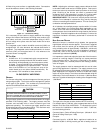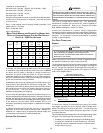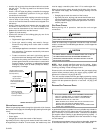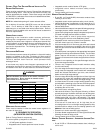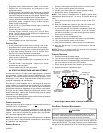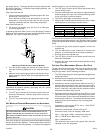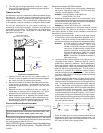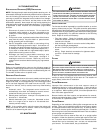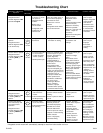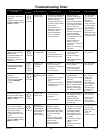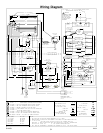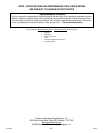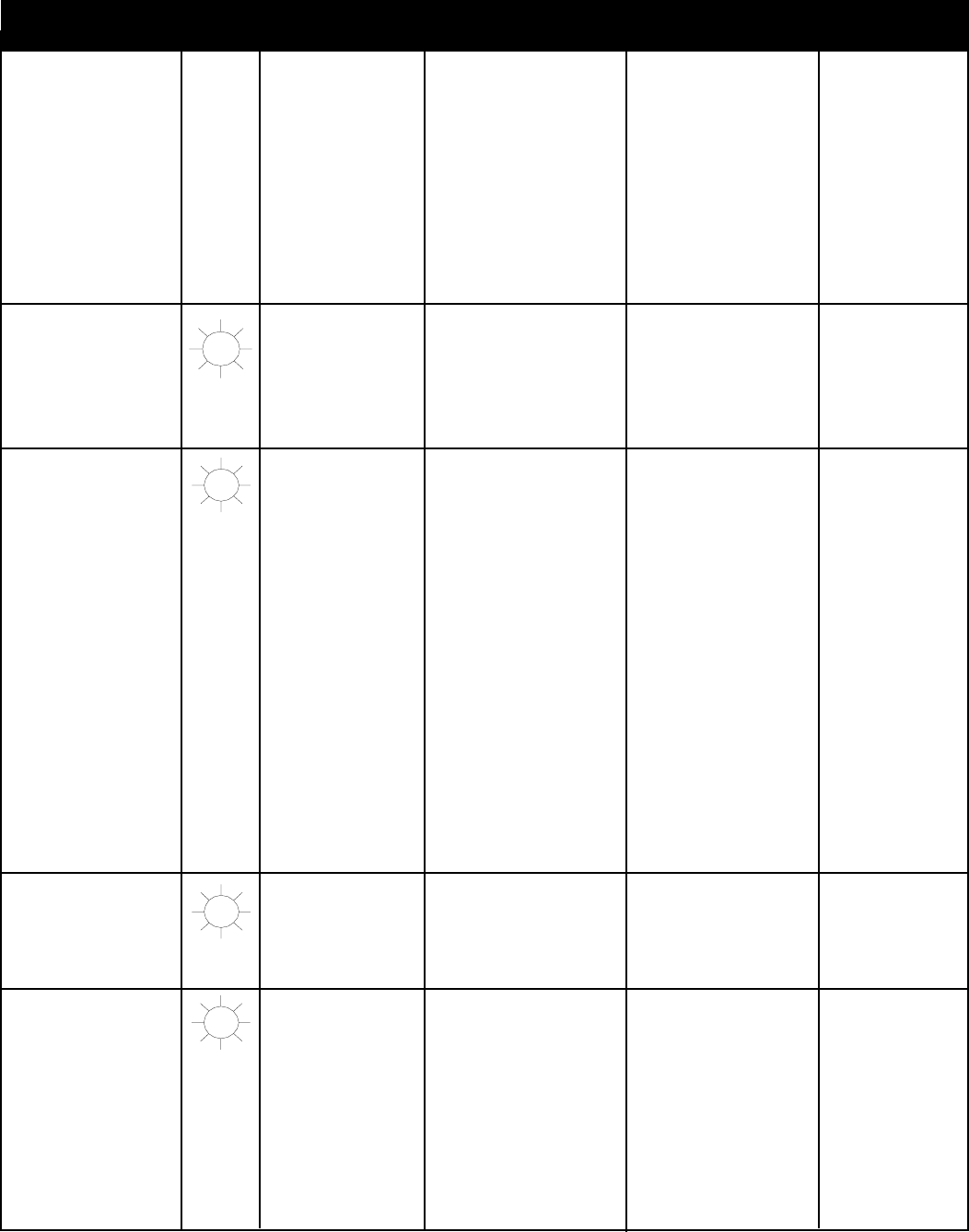
29
IO-247A 12/04
1
Integrated control module will automatically attempt to reset from lockout after one hour.
Troubleshooting Chart
•Furnace lockout due
to an excessive
number of ignition
“retries” (3 total)
1
.
•Auxiliary limit open
•Locate and correct gas
interruption.
•Replace or realign
igniter.
•Check flame sense
signal. Sand sensor if
coated and/or oxidized.
•Check flue piping for
blockage, proper length,
elbows, and termination.
•Verify proper induced
draft blower
performance.
•Check circulator blower
speed and performance.
Correct speed or replace
blower if necessary.
•Turn power OFF
prior to repair.
•Igniter is fragile,
handle with care.
•Sand flame sensor
with emery cloth.
•See “Combustion
and Ventilation Air
Requirements” and
“Category I
Venting (Vertical
Venting)” section
for details.
•See Product Data
Bulletin for
allowable rise
range and proper
circulator speed.
•Furnace fails to operate.
•Integrated control
module diagnostic LED
is flashing ONE (1)
flash.
1
1 FLASH
•Failure to establish flame.
Cause may be no gas to
burners, bad igniter or
igniter alignment,
improper orifices, or
coated/oxidized or
improperly connected
flame sensor.
•Loss of flame after
establishment. Cause
may be interrupted gas
supply, lazy burner flames
(improper gas pressure or
restriction in flue or
improper induced draft
blower performance.
•Insufficient conditioned
air over the heat
exchanger. Blocked
filters, restrictive
ductwork, improper
circulator blower speed,
or failed circulator blower.
•Low stage pressure
switch circuit is
closed.
•Induced draft blower
is not operating.
•Replace induced draft
blower pressure
switch.
•Repair short.
•Turn power OFF
prior to repair.
•Replace pressure
switch with proper
replacement part.
•Furnace fails to operate.
•Integrated control
module diagnostic LED
is flashing TWO (2)
flashes.
2
2 FLASHES
•Induced draft blower
pressure switch contacts
sticking.
•Shorts in pressure switch
circuit.
•Inspect pressure
switch hose. Repair, if
necessary,
•Inspect flue for
blockage, proper
length, elbows, and
termination.
•Correct pressure
switch setpoint or
contact motion.
•Tighten or correct
wiring connection.
•Pressure switch hose
blocked, pinched or
connected improperly.
•Blocked flue or weak
induced draft blower.
•Incorrect pressure switch
setpoint or malfunctioning
switch contacts.
•Loose or improperly
connected wiring.
•Pressure switch
circuit not closed.
•Induced draft blower
is operating.
•Induced draft blower
runs continuously with
no further furnace
operation.
•Integrated control
module diagnostic LED
is flashing THREE (3)
flashes.
3
3 FLASHES
•Turn power OFF
prior to repair.
•See “Combustion
and Ventilation Air
Requirements”
and “Category I
Venting (Vertical
Venting)” section
for details.
•Replace pressure
switch with proper
replacement part.
•No 115 volt power
to furnace, or no 24
volt power to
integrated control
module.
•Blown fuse or
circuit breaker.
•Intergrated contol
module has an
internal fault
•Manual disconnect switch
OFF, door switch open, or
24 volt wires improperly
connected or loose.
•Blown fuse or circuit
breaker.
•Intergrated contol module
has an internal fault
•Assure 115 and 24 volt
power to furnace
integrated control
module.
•Check integrated control
module fuse (3A).
Replace if necessary.
•Check for possible
shorts in 115 and 24 volt
circuits. Repair as
necessary.
•Replace bad intergrated
control module.
•Turn power OFF
prior to repair.
•Replace integrated
control module
fuse with 3A
automotive fuse.
•Read precautions
in “Electrostatic
Discharge” section
of manual.
•Furnace fails to operate.
•Integrated control
module diagnostic LED
provides no signal.
NONE
Fault Description(s) Possible Causes Corrective Action Cautions and Notes
Symptoms of Abnormal
Operation
Associated
LED Code
2
•Furnace fails to
operate.
•Integrated control
module diagnostic LED
is lit continuously.
ON
1 FLASH
•No signal from
thermostat
•Improper thermostat
connection or setting.
•Check thermostat
connections and
settings.
•Turn power OFF
prior to repair.
•Improper
thermostat
connection or
setting.



